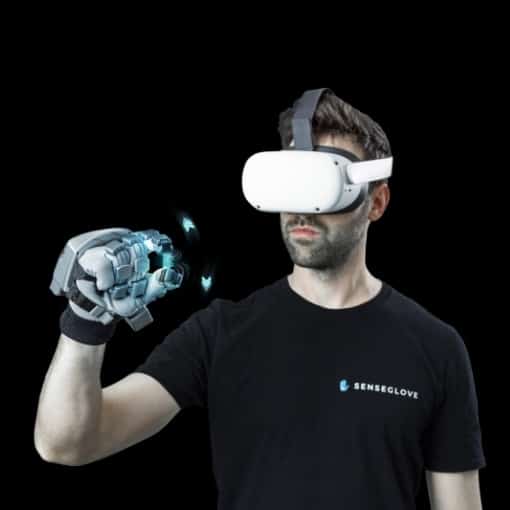The Role of Haptic Gloves and VR in Disaster Management
First responders conduct mock disasters to prepare for the worst-case scenario as a mandatory practice. Still, no simulation can fully prepare disaster management teams for an actual event. This is where haptic feedback VR gloves step in. With the help of VR technology and tactile response, you can put the brain in a crisis situation and act on the spot. Read on to learn how haptic feedback gloves work and what they offer to the disaster management industry.
The Technology Behind Haptic Feedback Gloves
Haptic feedback gloves are designed to deliver a natural sensation to users through the power of force feedback. This feedback emits up to 20N (Newtons) of resistance within 10ms which is equivalent to the weight of a 2 kg brick on each finger. The various amounts of force, transferred to the fingertips through mechanical wires, enables SenseGlove to elevate training simulations with all sorts of virtual objects, from robust fire extinguishers to fragile light bulbs. Force-feedback technology is combined with vibrotactile feedback that allows to create the feeling of realistic button clicks and impact simulations, essential for virtual reality training with tools and dashboards. Together with motion capturing, these technologies make for unparalleled natural experience in VR where the user can lift, hold, push and throw virtual objects like the real ones.
The Role of VR Technology in Disaster Management
Due to the lack of real-life situations, disaster management practices are insufficient for a first responder team. But, there is a way to stimulate those practices with the help of virtual reality.
VR itself already helps to create a realistic visual experience and place a user into any environment without any risk. Disaster management can take advantage of VR to enhance emergency training. As a result, it will expose users to stressful yet real critical situations. But visual and audio simulations are not always enough for an efficient training, in many cases hands on actions are required.
How Haptic Gloves and VR Support Disaster Management
First responders must be trained to provide first aid when needed. They must make wise decisions under pressure, take immediate action, remain focused to reduce casualties and risks and take actions accordingly. That’s where muscle memory comes into play.
With haptic feedback gloves, the brain finds it easier to believe that what it sees is real and that it has to act on the spot. While VR creates a real-life setting and delivers all visual and audio effects, the haptic gloves are finalising the experience on a tactile note.
Benefits of Using Haptic Feedback Gloves in Disaster Management
Haptic feedback gloves are made from sustainable materials. First responders usually waste tons of water during practice and use firearms which can be problematic for beginners.
But with haptic feedback gloves and the power of VR, the experience minimises the risk yet delivers the same impact. This way, beginners can learn in a safe yet realistic virtual environment and better manage real-life situations. At the same time the gear and equipment can be better preserved for actual emergencies.
SenseGlove: The Best Haptic Feedback Gloves
Haptic feedback VR gloves are essential in crisis response training. With SenseGlove, you can find the latest smart gloves using advanced technology and controllable features. Get the hang of haptic feedback gloves, adjust the level of complexity in different exercises and improve basic trainee skills.
Do you want to learn more about how SenseGlove can optimise your company’s training? Get in touch now!
Want to learn more about how other companies have implemented the SenseGlove Nova into their training? Check out some of our case studies!


